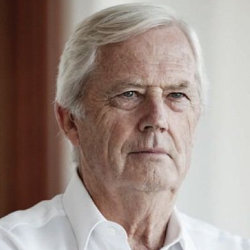When it comes to the defence of Australia, much is made of the ANZUS treaty. Compared to other treaties, for example the NATO treaty, where an attack on one is explicitly regarded as an attack on all and consultation, assistance and the use of armed force all are clearly referred to, the ANZUS treaty is rather pallid. It promises consultation and the rather vague “act to meet the common danger in accordance with constitutional processes”.
Rory Metcalf from the Lowy notes “Technically, the ANZUS treaty requires the parties to consult in the event of a threat to one of them, rather than to automatically come to the other’s assistance.” Gareth Evans has said the wording means almost anything the administration of the day chooses for it to mean, while Hugh White has pointed out there are many questions about what “act” actually means, and it provides a let out from military action. He notes a stern letter could count as an “act”.
Allan Gyngell, former director of ONA, in his aptly named book “Fear of Abandonment” provides a real example of the treaty in action. In 1963 when Australia consulted the US about what support it could expect under the ANZUS treaty if Australian troops came under Indonesian attack, the US response was cautious. Any support from US ground forces, even in the case of direct Indonesian attack, was ruled out.
Given the overblown nature of the treaty, it is worth examining some of the costs of going along with US militarism. These costs are both direct and indirect.
The direct costs are considerable, and range over a number of conflicts. For example, 521 Australians died in the Vietnam War, and more than 3000 were physically wounded. Many more again suffered with problems like alcoholism or PTSD. It is estimated 2 million Vietnamese civilians died, as did 1.1 million North Vietnamese and Viet Cong Fighters. Malcolm Fraser was livid when he learnt years later that the CIA knew the Vietnam War was unwinnable, even before any troops were committed.
The financial costs are also very large. Our 2003 -2008 Iraq deployment cost $1,577 million and current deployments in the Middle East $614 million in 2016-17. Since 1998 more than $15 billion has been spent on military operations and overseas deployments.
In 2014 the US urged allies to lift their defence spending to 2% of GDP. As a result our defence budget has rapidly increased. The steep increase is particularly remarkable in light of the 2016 Defence White Paper which reported that “there is no more than a remote prospect of a military attack by another country on Australian territory in the foreseeable future”. Increasing spending to 2% of our GDP means we are massively outspending our neighbours and risk sparking a regional arms race.
Our links to the US military have also led to decisions clearly not in Australia’s national interest. There have been some very poor procurement choices – a spectacular example being the F-35 Joint Strike Fighter plane. It is much better suited to joining US attacks than defending Australia. This plane is long overdue, massively over budget, technically deeply flawed and readily shot out of the sky by older planes. Lieutenant-General Ken Wilsbach, who commands US forces out of Alaska, said in February F-35s were “meant to be flown complementarily” with F-22 Raptors; however the US will not sell F-22s to anyone. The Canadian government is discussing withdrawing from its F-35 contracts.
Such purchases increase our US dependence, and materially worsen our capability for defence self-reliance. The Australian military is also thoroughly enmeshed with very senior personnel in the US chain of command in the Pacific.
American bases such as Pine Gap and Darwin increase the risk of Australia being a target. Recently leaked NSA documents show Pine Gap provides data for US drone strikes in Afghanistan and elsewhere, identifying Australia as an active participant in a program of extra judicial killings, resulting in hundreds of civilians deaths.
There are also many indirect costs with this burgeoning militarism. Domestically there is less money available for priorities such as health, education and housing.
Across government there is proliferation of military operational language and secrecy, with marked reduction in both transparency and accountability. The most obvious example is the “Department of Customs and Immigration” which has morphed into “Border Force”.
The education sector is not immune; for example, Melbourne University has partnered with Lockheed Martin, the world’s biggest weapons manufacturer, stating they are “in an ideal position to assist Lockheed Martin with their research goals”. This is particularly concerning given Lockheed Martin is actively developing lethal autonomous weapons systems (potential weapons of mass destruction), despite experts calling for the UN to ban their development.
Weapons manufacture is justified as a new job creation scheme. However there is good research showing that for the same expenditure, many more jobs are created in health care, education and clean energy.
Australia has chosen not to subsidise a car manufacturing industry. In contrast the weapons industry now has its own powerful minister, who travels overseas to spruik arms sales to countries like Saudi Arabia – renowned for human rights abuses and accused of war crimes in Yemen. World Vision Australia chief Tim Costello summed it up: “The government says this is an export and investment opportunity – but we would be exporting death and profiting from bloodshed. Is that what we want Australia to be known for?”
There are also concerns about political impacts. Australian electoral donation laws are much more opaque than in the US. In 2016 Lockheed Martin spent US$19 million in US political donations and lobbying, mostly going to Republican Party members, especially those on the Armed Services Committee and the Appropriations Panel.
An increased weapons industry brings with it the risk of political interference, with lobbyists, industry groups and donations potentially shifting decisions away from the public interest. A relatively small donation can make a huge difference in a marginal electorate, and the carrot of manufacturing jobs can outweigh broader ethical considerations.
An expanded weapons sector escalates the need for donation reform, tighter lobbying rules and a federal ICAC, not to mention war powers reform – so going to war is no longer a “captain’s pick”.
Australia’s foreign aid budget continues to dwindle, now down to 0.21% of Gross National Income. This contrasts with the British, who have enshrined in law the OECD recommended levels of 0.7%, despite widespread austerity measures. Then Prime Minister Gordon Brown stated they were not going to make cuts “on the back of the world’s poorest”. However in Australia, treasurer Joe Hockey justified major aid cuts in 2014 by saying the savings would go to defence spending.
Diplomatic funding has been inadequate for some time, and little has been done lately to improve the situation. In the past, Australia has acted as a mediator in places like Cambodia and Bougainville. But currently Australia has no specific, focussed capacity for conflict resolution measures. Mediation is very cost effective and has the potential to save many lives; but it requires a skilled workforce and an independent standpoint.
It is time to reflect on the close enmeshment of Australian and US foreign policy, and the real costs of such close military ties. As critical services like healthcare and education struggle with inadequate resources, our overseas aid drops to shameful levels, our diplomatic capabilities shrink and our defence materiel choices make us less self-reliant, we need to be clear what we want as a society.
Do we want to continue rapidly increasing our defence spending and being “joined at the hip” for US military adventures, while simultaneously risking a regional arms race? Or do we want to change our priorities, focusing more on keeping our community healthy, better educated and housed, improving Australia’s defence self-reliance and building good relations with other nations. Ultimately, we do have a choice.
Margaret Beavis is a Melbourne GP. She is immediate past president of the Medical Association for Prevention of War, and a board member of ICAN Australia (the International Campaign for the Abolition of Nuclear weapons).



